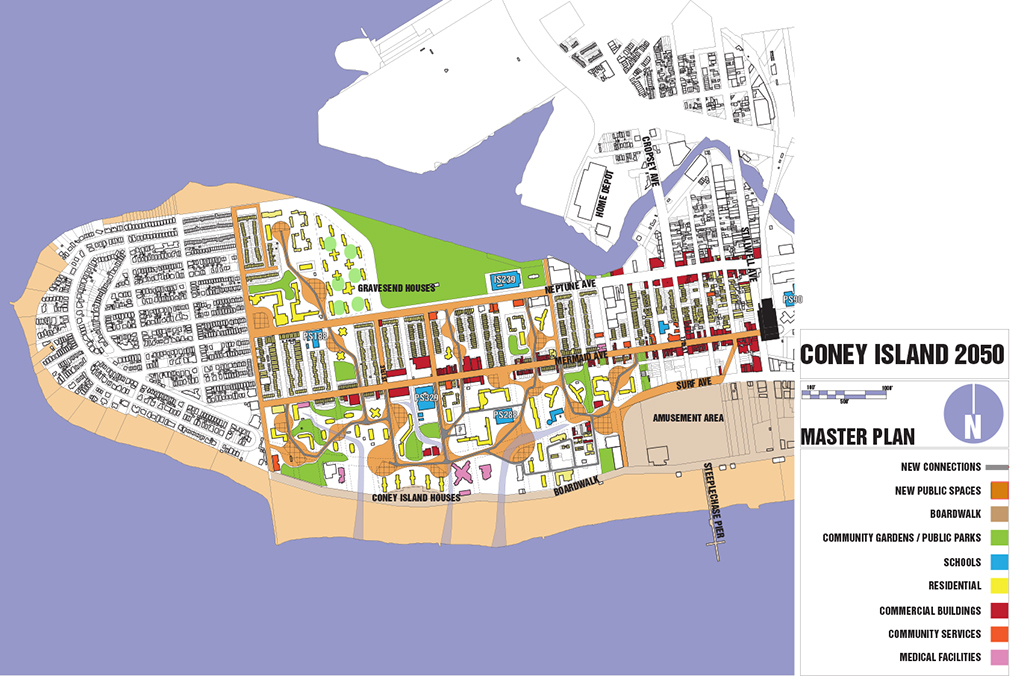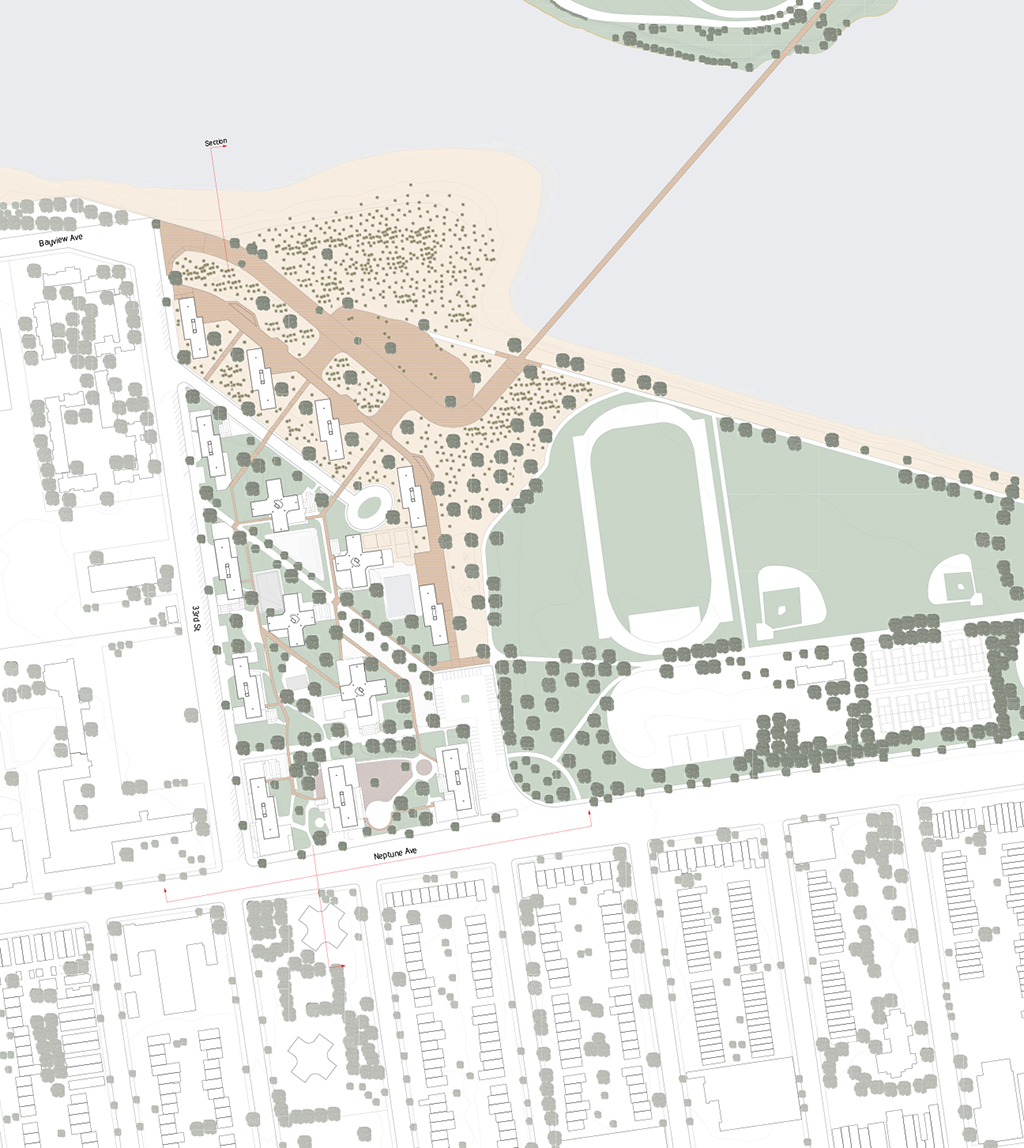Coney Island CYCLONE!
Fall 2013
Arch 400
Undergraduate Architecture
Design Proposals to address the environmental challenges and possibilities at Coney Island NYCHA campuses
The course investigated the technical, social and cultural implications of environmental change for The New York City Housing Authority Coney Island Houses and Gravesend Houses in the wake of Superstorm Sandy. We developed strategies to address pre-existing socio-economic vulnerabilities simultaneously with emerging challenges.
The scale of our study was the “neighborhood”, understood as the NCYHA campus and its surrounding urban fabric. Too often these campuses are treated in isolation and the mutual benefit that campus and adjacent community can bring to each other is ignored. In the case of Coney Island, where rising tides will inundate NCYHA and surrounding fabric equally, the redefinition of neighborhood context is particularly key.
Coney Island’s outsized historical narratives continue to shape its present and future. The grand scale of its modernist public housing exists as a counter- utopia to its magical legacy of amusement and relaxation. The duel between these cultures and now climate change remains unresolved in the Department of City Planning’s current rezoning for the Island. Our work challenged the assumptions of this plan from the point of view of the community.
As a RAMP studio, we collaborated with several GCPE courses over the semester, and, most importantly, participated in the community outreach led by SES 631.
Professor: Professor Deborah Gans
Students: David Aedelin, Eric Anderson, Alyssa Bearoff, ,Felcia Chen, Sophia Cosenza, Matthew Potts, Intiporn Rojanasopondist, Tracy Tan







